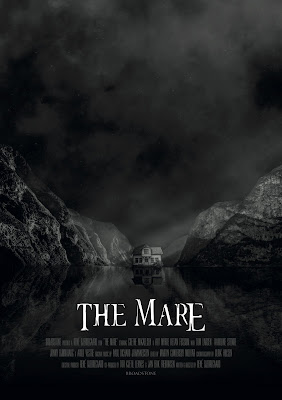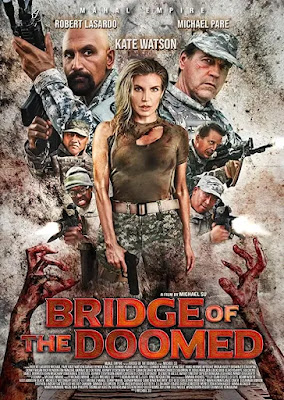Text © Richard
Gary / Indie Horror Films, 2022
Images from the Internet
The Hostage
Directed by Gino Alfonso
Ginome Films; Javelina 98 Productions
87 minutes, 2022
With the popularity of 8mm and occasionally 16mm if your parents had some cash, there was the inevitable rise of the “anyone can make a movie” genre. Interestingly, mostly this was horror and sci-fi. Then came the camcorder, and this mentality exploded with the amount of home-made filmmaking as the technology progressed. Now anyone with a camera has a decent one (even on cell phones), and the momentum continues.
A lot of viewers despair of this amateur level of filmmaking, but then there are those of us who encourage it. How else would we get films like Johnny Dickie’s Slaughter Tales (released 2012), or the films in the Henderson Brothers’ WinnersTape All (released 2016)? Occasionally, the director will manage to snare a name actor to help along with the project; in this case it is Robert LaSardo (I think this is the third film with him I have reviewed in the last month).
In the opening sequence, a guy with hair like the poster of Eraserhead (1977) summons the cloaked demon Arooka (LaSardo), bringing him into the world, though it does not end well for him, and now Arooka is free to cause some human damage.
This film is being called an “urban horror,” meaning that ,it takes place in the city (filmed in central Colorado, such as the films of Dakota Ray) rather than a cabin-in-a-remote-area motif which seems to dominate the field recently (possibly only second to zombies), that there will be people of color and others swearing non-stop, and probably there will be drugs involved. All are present here.

Amanda Rabinowitz, Sam Delossantos
We meet loser drug dealer wannabe and lead protagonist Jeremy (Sam Delossantos), a white guy who you know is cool because of his sleeveless white tee and the backwards baseball cap. Does not come across as well educated (the kinda guy who wears the backward cap and shields the sun with his hand). He and his pal Will (Arnold King), who is far advanced mentally to Jeremy despite his religious bent, try to buy some weed to sell, but…
Seeking revenge on the drug dealer, Ericson (Brian McGee), they hire a cousin-in-law, Derek (Rion Evans), to fix the sitch, but he is a bit unpredictable. All this is mixed up in “urban” language that often went over this milquetoast white bread reviewer who is more comfortable in the punk world than hip-hop. Meanwhile, except for the prologue, every scene so far 25 minutes in has been in a room, but mostly in cars, parked and dialogue-enriched.
Enter the two females of the story: there is Jeremy’s hyper-aggressive girlfriend, Katie (Amanda Rabinowitz) who stumbles onto some really bad planning by Jeremy and crew, and Ericson’s titular junkie girlfriend who is kidnapped by this group of knuckleheads as leverage for cash, Melissa (Sonja Cimone). The problem with this – perhaps not the only one – is that she is possessed by Arooka. So, not only are they having to deal with a deadly drug king, but a titular demon host, predicting everyone’s short demise, of course. This includes Jeremy and Will’s stoner friend, Grady (Tamir Nemekhbayar), in whose house – well, garage – where the hostaging [sic] is taking place.
Most of the action is arguments between the main characters, even with a bunch of possessions, which helps crank it up a notch. Arooka is keeping busy taking people to his CGI world and bringing most of them back with a bit of alterations, which help move the story and the conflict along.
There are some other flaws I have found, particularly the sound quality, which is weak (so weak the auto-captioning does not always work and certainly mis-translates). The slang is also a hindrance. There is way more dialogue than there is violence, and certainly little blood other than in the prologue (or nudity).
Okay, on the good side, this is the director’s full feature premiere, after a few shorts. The shorts brought him to the level of where the editing and framing are well done, the storyline has some glimmers, and there is the indication of what is possible as he keeps up the work, which I hope he does and gets even better over time. As I have said before, a lot of horror directors’ early films have been questionable in terms of writing and acting, such as Cronenberg’s Shivers/They Came From Within (1975) or the really early works of Peter Jackson. As the band Sparks sang, “You cannot start off and be Yehudi Menuhin.”
There is quite a bit of imaginative
chances, specifically in the second half and especially in the third act. I see
this film as a stepping stone on the career path of the director, and I will enjoy
watching his progress.
IMDB listing HERE


























